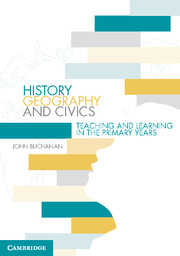76 results
Industrial Relations and the Coalition’s Fightback Package: An Assessment
-
- Journal:
- The Economic and Labour Relations Review / Volume 3 / Issue 1 / June 1992
- Published online by Cambridge University Press:
- 01 January 2023, pp. 80-93
-
- Article
-
- You have access
- Export citation
Labour Market Efficiency and Fairness: Agreements and the Independent Resolution of Difference
-
- Journal:
- The Economic and Labour Relations Review / Volume 18 / Issue 2 / May 2008
- Published online by Cambridge University Press:
- 01 January 2023, pp. 85-95
-
- Article
-
- You have access
- Export citation
The Growth of Contractors in the Construction Industry: Implications for Tax Revenue
-
- Journal:
- The Economic and Labour Relations Review / Volume 11 / Issue 1 / June 2000
- Published online by Cambridge University Press:
- 01 January 2023, pp. 46-75
-
- Article
-
- You have access
- Export citation
Competition of Common Cocklebur (Xanthium pensylvanicum) with Cotton (Gossypium hirsutum)
-
- Journal:
- Weed Science / Volume 30 / Issue 5 / September 1982
- Published online by Cambridge University Press:
- 12 June 2017, pp. 553-556
-
- Article
- Export citation
Interaction of Prometryne and Phorate on Bean
-
- Journal:
- Weed Science / Volume 20 / Issue 1 / January 1972
- Published online by Cambridge University Press:
- 12 June 2017, pp. 89-92
-
- Article
- Export citation
Competition of a Binary Weed System with Cotton (Gossypium hirsutum)
-
- Journal:
- Weed Science / Volume 33 / Issue 6 / November 1985
- Published online by Cambridge University Press:
- 12 June 2017, pp. 807-809
-
- Article
- Export citation
Efficacy and Economics of Weed Control Methods in Cotton (Gossypium hirsutum)
-
- Journal:
- Weed Science / Volume 32 / Issue 1 / January 1984
- Published online by Cambridge University Press:
- 12 June 2017, pp. 95-100
-
- Article
- Export citation
Essential Lessons in a Potential Sarin Attack Disaster Plan for a Resource-Constrained Environment
-
- Journal:
- Disaster Medicine and Public Health Preparedness / Volume 12 / Issue 2 / April 2018
- Published online by Cambridge University Press:
- 18 May 2017, pp. 249-256
-
- Article
- Export citation
In-School Sustainability Action: Climate Clever Energy Savers
-
- Journal:
- Australian Journal of Environmental Education / Volume 32 / Issue 2 / July 2016
- Published online by Cambridge University Press:
- 28 January 2016, pp. 154-173
-
- Article
- Export citation
Statistical Analysis of Paradigmatic Class Richness Supports Greater Paleoindian Projectile-Point Diversity in the Southeast
-
- Journal:
- American Antiquity / Volume 81 / Issue 1 / January 2016
- Published online by Cambridge University Press:
- 20 January 2017, pp. 174-192
- Print publication:
- January 2016
-
- Article
- Export citation
99.37 Anthropologic
-
- Journal:
- The Mathematical Gazette / Volume 99 / Issue 546 / November 2015
- Published online by Cambridge University Press:
- 02 November 2015, pp. 537-538
- Print publication:
- November 2015
-
- Article
- Export citation
Longitudinal costs of caring for people with Alzheimer's disease
-
- Journal:
- International Psychogeriatrics / Volume 27 / Issue 5 / May 2015
- Published online by Cambridge University Press:
- 23 September 2014, pp. 847-856
-
- Article
- Export citation
six - ‘Choice’ and ‘fairness’: the hollow core in industrial relations policy
-
-
- Book:
- Australian Public Policy
- Published by:
- Bristol University Press
- Published online:
- 04 March 2022
- Print publication:
- 21 August 2014, pp 97-112
-
- Chapter
- Export citation
Empirical analysis of legal institutions and institutional change: multiple-methods approaches and their application to corporate governance research
-
- Journal:
- Journal of Institutional Economics / Volume 10 / Issue 1 / March 2014
- Published online by Cambridge University Press:
- 28 November 2013, pp. 1-20
-
- Article
-
- You have access
- Open access
- HTML
- Export citation
Part 1 - Content areas
-
- Book:
- History, Geography and Civics
- Published online:
- 12 August 2019
- Print publication:
- 09 September 2013, pp 1-2
-
- Chapter
- Export citation
Acknowledgements
-
- Book:
- History, Geography and Civics
- Published online:
- 12 August 2019
- Print publication:
- 09 September 2013, pp xiii-xiv
-
- Chapter
- Export citation

History, Geography and Civics
- Teaching and Learning in the Primary Years
-
- Published online:
- 12 August 2019
- Print publication:
- 09 September 2013
-
- Textbook
- Export citation
Contents
-
- Book:
- History, Geography and Civics
- Published online:
- 12 August 2019
- Print publication:
- 09 September 2013, pp vii-x
-
- Chapter
- Export citation
Chapter 8 - Teaching values
- from Part 2 - Processes
-
- Book:
- History, Geography and Civics
- Published online:
- 12 August 2019
- Print publication:
- 09 September 2013, pp 130-148
-
- Chapter
- Export citation
Chapter 6 - A world of difference: globalisation and education
- from Part 1 - Content areas
-
- Book:
- History, Geography and Civics
- Published online:
- 12 August 2019
- Print publication:
- 09 September 2013, pp 92-106
-
- Chapter
- Export citation

